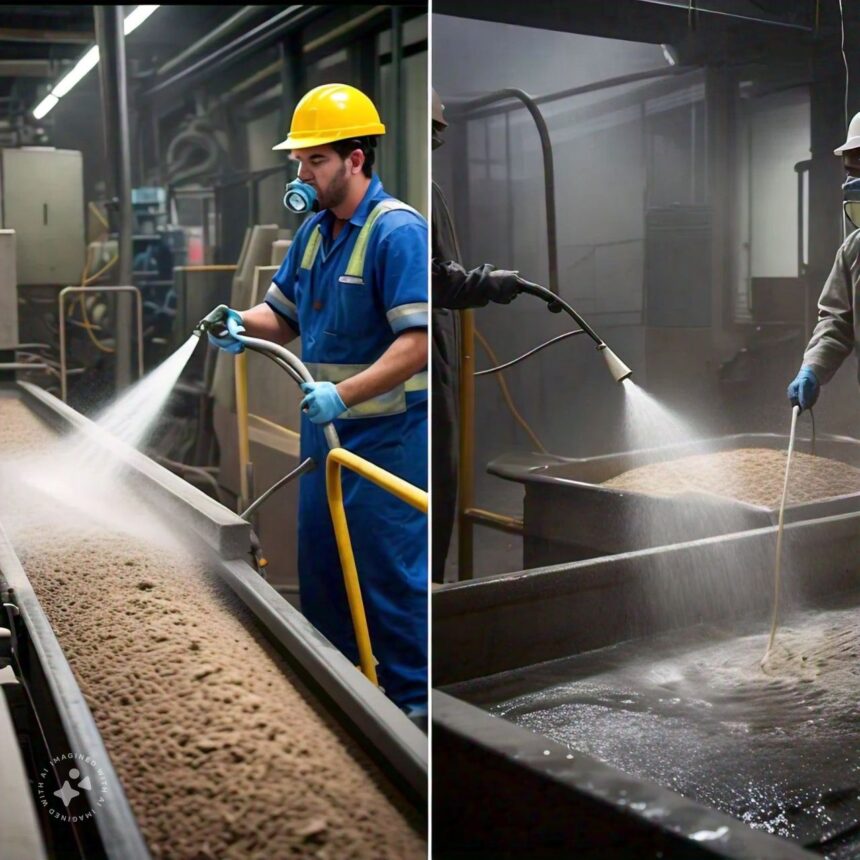Dust is a common but often overlooked health hazard, both in the workplace and at home. It consists of tiny particles, including dead skin cells, hair, textile fibres, and other materials like soil or pollen, that can easily become airborne and inhaled. While some types of dust may seem harmless, prolonged exposure can lead to a range of health issues.
One of the primary concerns is the respiratory system. When dust particles are inhaled, they can irritate the nose, throat, and lungs. Over time, this can lead to conditions such as chronic bronchitis, asthma, or, in severe cases, occupational lung diseases like pneumoconiosis. The latter is often associated with industrial environments where workers are exposed to hazardous dust, such as silica or asbestos, which can lead to more severe conditions like lung cancer.
Beyond respiratory issues, dust can also trigger allergic reactions. Many people are sensitive to dust mites, microscopic organisms that thrive in warm, humid environments. Dust mites and their waste can cause symptoms such as sneezing, runny nose, itchy eyes, and even exacerbate conditions like asthma. Long-term exposure can weaken the immune system, making individuals more susceptible to other illnesses.
In addition to these direct health impacts, dust can carry harmful chemicals or toxic substances. For instance, dust in older buildings may contain lead particles from old paint, or carcinogenic compounds from deteriorating building materials. These toxins can be ingested or absorbed through the skin, posing risks to overall health.
Workplaces, particularly in industries like construction, mining, and manufacturing, must take extra precautions to control dust exposure. Proper ventilation systems, personal protective equipment (PPE), and regular cleaning can help mitigate risks. At home, using air purifiers, regularly vacuuming with HEPA filters, and maintaining low humidity levels can also reduce the dangers of dust.
In summary, while dust may seem insignificant, it can pose serious health risks. Prolonged exposure can lead to respiratory issues, allergic reactions, and more severe diseases. It’s essential to manage and control dust to protect long-term health.
Dust suppression is a crucial part of managing airborne particles in industries such as mining, construction, and manufacturing. Two of the most commonly used methods are water-based dust suppression and electrostatic dust suppression. Both have distinct characteristics, advantages, and drawbacks, depending on the type of environment and dust being controlled.
Water-Based Dust Suppression
Water-based dust suppression is one of the most widely used methods. It works by spraying water droplets over dusty areas or processes, causing the dust particles to become wet and heavy, which in turn helps to settle them back onto surfaces rather than allowing them to remain airborne. Various techniques, such as fine misting systems, spray bars, or foam-based applications, are used to distribute water effectively.
Advantages of Water-Based Suppression
Cost-Effective: Water is generally inexpensive and readily available, making this method an economical solution for dust control, particularly in large-scale operations such as construction or mining.
Easy to Implement: Most facilities already have access to water and can easily install systems such as hoses or sprayers, making it a relatively simple solution to apply.
Effective for Larger Particles: Water-based systems are particularly effective at capturing larger dust particles, such as those created in excavation or demolition processes.
Adaptable: It can be used in a wide range of environments, from outdoor sites to indoor industrial settings.
Disadvantages of Water-Based Suppression
Water Consumption: One of the most significant downsides is the large amount of water required to control dust effectively. In areas with limited water resources, this can be unsustainable.
Mud Formation: Excessive use of water can lead to the formation of mud and sludge, which may create hazards for workers and increase the risk of accidents such as slipping or machinery becoming stuck.
Limited Control of Fine Particles: Water-based systems are not always effective at capturing fine dust particles (PM2.5 and PM10), which can remain airborne and pose greater health risks due to their ability to penetrate deep into the lungs.
Electrostatic Dust Suppression
Electrostatic dust suppression uses electrical charges to attract and capture dust particles. In this system, dust particles are ionised and then attracted to a grounded or oppositely charged surface, effectively pulling them out of the air and containing them. This method is typically used in enclosed or semi-enclosed environments, such as factories or warehouses.
Advantages of Electrostatic Suppression
Effective for Fine Particles: Electrostatic systems are particularly effective at capturing fine particles, including hazardous PM2.5 and PM10 dust, which are not always well-controlled by water-based systems. This makes it an ideal solution for environments with fine, hazardous dust like coal or silica.
Low Water Use: Unlike water-based suppression, static dust control systems do not rely on water, making them a better option in environments where water conservation is important or where liquid contact is undesirable.
No Mud or Sludge: As no water is used, electrostatic suppression avoids issues related to mud formation, reducing the risk of workplace hazards and making it easier to maintain clean and dry working conditions.
Energy Efficient: Electrostatic systems generally consume less energy than one might expect, as they are designed to work efficiently in capturing dust without generating excessive heat or energy waste.
Disadvantages of Electrostatic Suppression
Higher Initial Costs: The installation of an electrostatic dust suppression system can be costly, particularly when compared to water-based methods. The system requires specialised equipment and skilled labour for setup.
Limited to Enclosed Spaces: This method is most effective in controlled environments, such as indoor factories or processing plants. Its effectiveness in open or outdoor spaces is limited, as it relies on contained airflow and ionised particles.
Ongoing Maintenance: These systems require regular maintenance to ensure that the electrical components remain in good working order. If not properly maintained, their effectiveness can be reduced over time.
Unsuitable for Explosive Dust: Electrostatic suppression may not be appropriate for environments with combustible dust, as the presence of electrical charges could potentially ignite flammable materials.
Conclusion
When comparing water-based and electrostatic dust suppression, it is clear that each method has its own set of advantages and limitations. Water-based suppression is cost-effective, easy to implement, and versatile, making it suitable for outdoor and large-scale applications. However, it is less effective at controlling fine dust and can lead to excess water consumption and mud-related hazards.
On the other hand, electrostatic dust suppression excels in capturing fine dust particles and operates without the need for water, making it ideal for enclosed environments with hazardous dust. However, it comes with higher upfront costs, requires ongoing maintenance, and is less suitable for outdoor or large, open spaces.
Choosing the right dust suppression system ultimately depends on the specific requirements of the environment, the type of dust, and the available resources. Both methods play an important role in improving air quality and protecting workers’ health, but their effectiveness varies depending on the situation.


